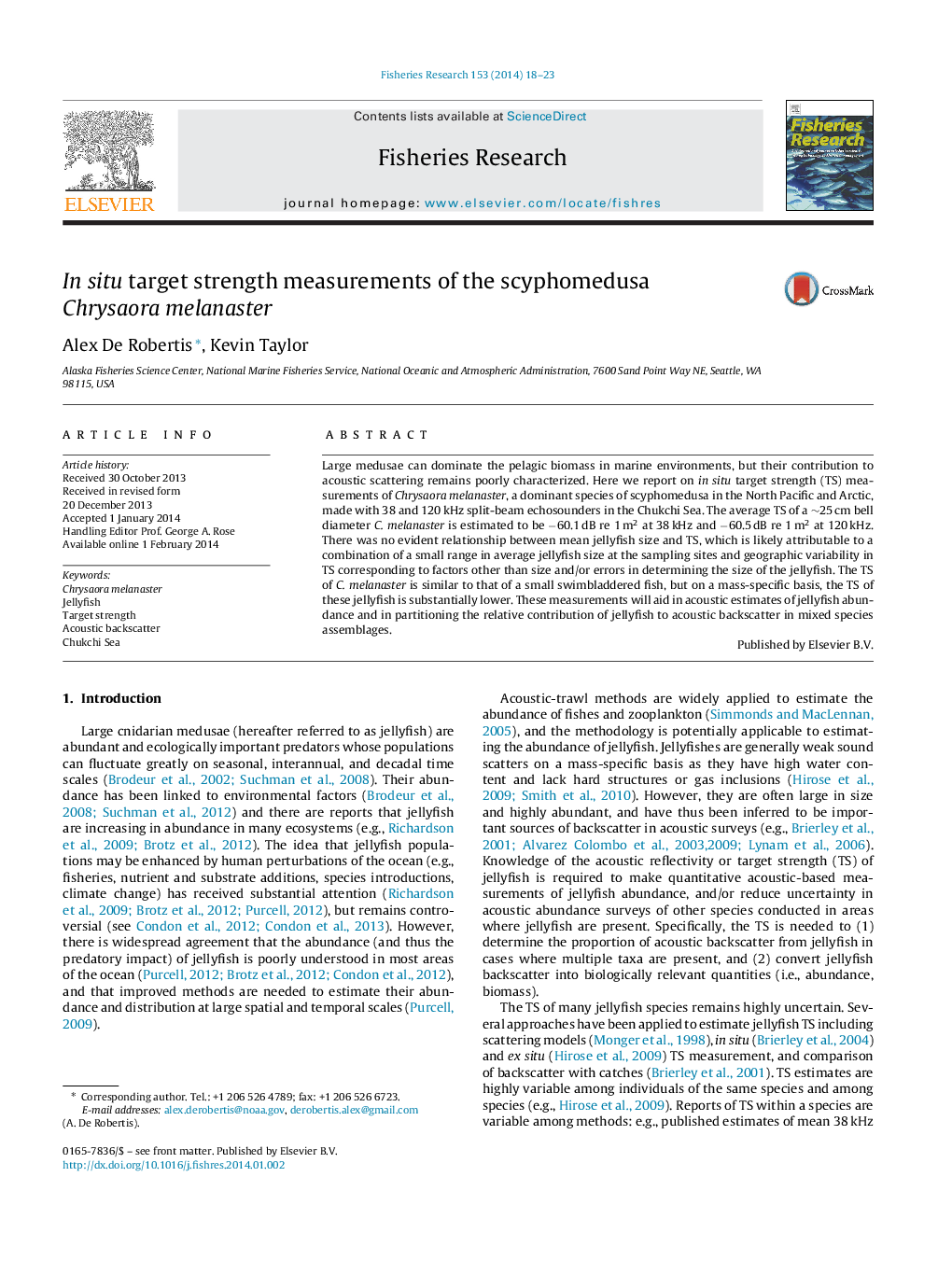| Article ID | Journal | Published Year | Pages | File Type |
|---|---|---|---|---|
| 6385866 | Fisheries Research | 2014 | 6 Pages |
Abstract
Large medusae can dominate the pelagic biomass in marine environments, but their contribution to acoustic scattering remains poorly characterized. Here we report on in situ target strength (TS) measurements of Chrysaora melanaster, a dominant species of scyphomedusa in the North Pacific and Arctic, made with 38 and 120Â kHz split-beam echosounders in the Chukchi Sea. The average TS of a â¼25Â cm bell diameter C. melanaster is estimated to be â60.1Â dB re 1Â m2 at 38Â kHz and â60.5Â dB re 1Â m2 at 120Â kHz. There was no evident relationship between mean jellyfish size and TS, which is likely attributable to a combination of a small range in average jellyfish size at the sampling sites and geographic variability in TS corresponding to factors other than size and/or errors in determining the size of the jellyfish. The TS of C. melanaster is similar to that of a small swimbladdered fish, but on a mass-specific basis, the TS of these jellyfish is substantially lower. These measurements will aid in acoustic estimates of jellyfish abundance and in partitioning the relative contribution of jellyfish to acoustic backscatter in mixed species assemblages.
Related Topics
Life Sciences
Agricultural and Biological Sciences
Aquatic Science
Authors
Alex De Robertis, Kevin Taylor,
